How (And Why) To Regenerate Cannabis Plants
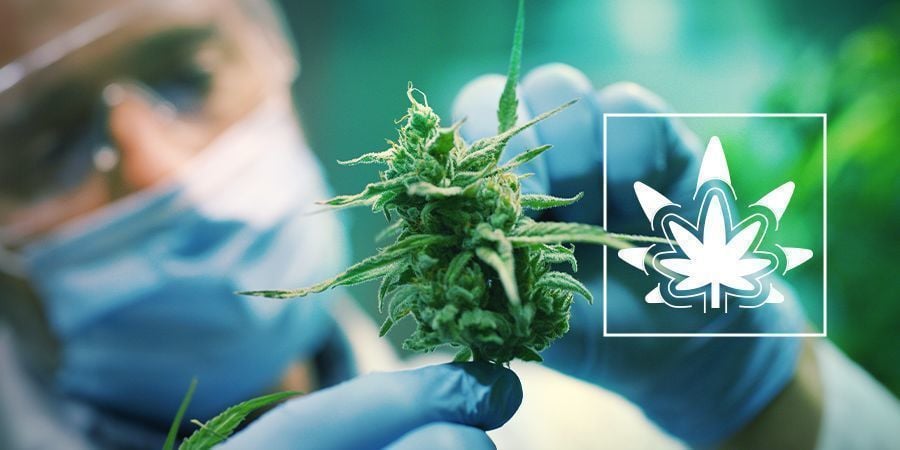
Regenerating cannabis plants is a technique for the advanced grower, but it’s not without its benefits and supporters. Read on to find out what it is, and how to do it!
You've lovingly nurtured your cannabis plant from the time she was a tiny sprout until her flowers were perfectly ripe and ready to cut. If it seems wrong to cast her aside in favour of a newer, younger model, we have good news for you. It's totally possible to breathe new life into your fading girl by learning how to regenerate cannabis plants.
Here, we'll walk you through how regeneration works, its pros and cons, and the differences between regenerating indoor, outdoor, and autoflowering plants. Finally, we'll end with step-by-step instructions to walk you through the process in greater detail. Ready? Let's go!
HOW DOES CANNABIS REGENERATION WORK?
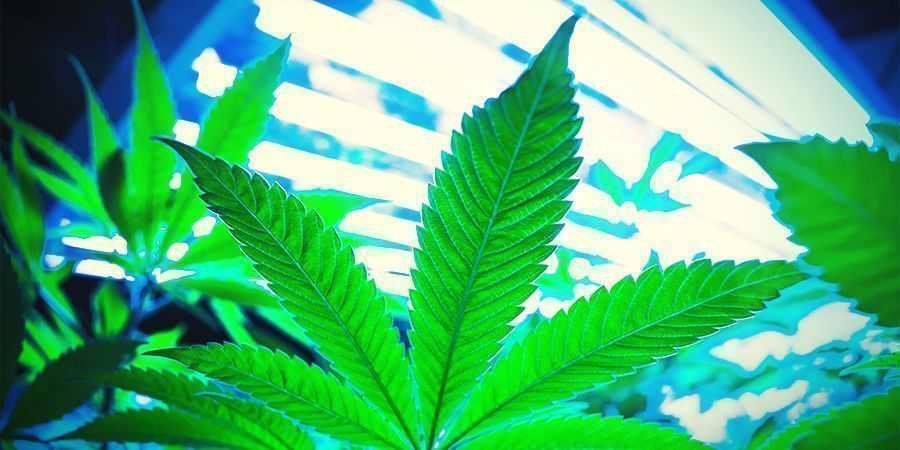
Cannabis plants are very photosensitive. As the available hours of light per day decrease, the change triggers these annuals to produce more of their flowering hormones. Once these hormones reach a set level, the plants know that their life will soon be over, so they answer the call to reproduce by starting the flowering stage.
By increasing the available hours of light, you can force the plant to reduce the amount of flowering hormones it produces. This drop will eventually stop the flowering process and force the plant to revert back to the vegetative stage. Sometimes growers do this by accident, but our focus will be on purposeful regeneration performed immediately after a successful harvest.
REASONS TO REGENERATE YOUR CANNABIS PLANTS

You don't need to justify your desire to regenerate plants. It's a cool skill to have, and no one likes a challenge more than weed growers. If you can manage to chop buds off the same plant multiple times, you'll definitely impress your smoking buddies with this magical feat. However, there are several more practical reasons to regenerate cannabis plants, other than having a story to tell while passing a nicely rolled spliff.
1. SAVES SPACE BY ELIMINATING MOTHERS
If you can consistently regenerate your existing plants, there's little to no need to keep a separate grow space along with the associated equipment for your mothers and a nursery of clones. This not only saves square footage that you could devote to flowering plants, but also saves money by reducing energy and hardware needs.
2. SAVES TIME BY REDUCING VEG
Cannabis strains that take well to regeneration bounce back quickly. Their roots, trunk, and primary branches are already developed, so they'll have a head start on the typical veg cycle with a robust support system. Plus, you won't have to wait for them to reach sexual maturity or guess whether they'll be female. In a best case scenario, you'll be able to harvest more buds off the same plant within eight weeks of the time it reverted to veg.
3. PRESERVES GENETICS
Your mother finally failed to thrive. You can't find any more of your preferred cannabis seeds. You realise near the end of bloom that you have a very special phenotype on your hands, but you carelessly forgot to take clones while you had the chance. With regeneration, there's no need to lose exceptional genetics just because bad things happen. Simply trick the plant into vegging again and you're back in business.
PROS AND CONS OF CANNABIS REGENERATION
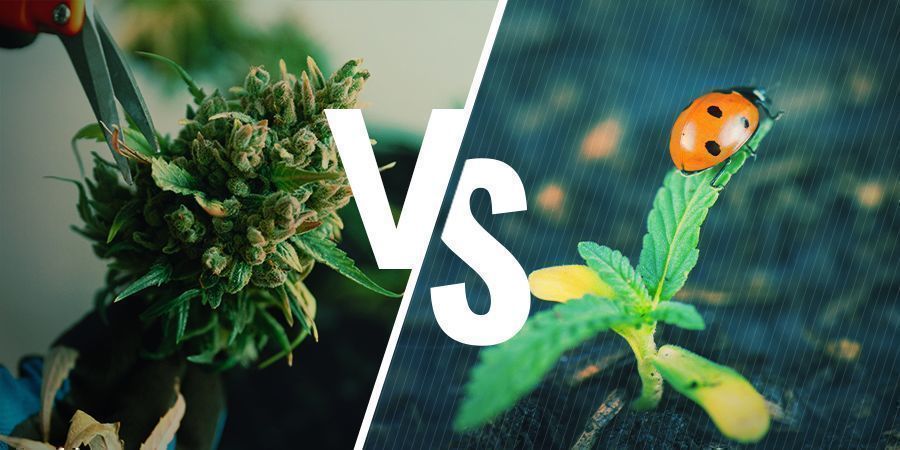
Like everything in life, regenerating cannabis plants has its pros and cons. Review this list so you know what you're getting yourself into before trying this advanced technique.
PROS
- Saves time and gets you to the next harvest faster.
- With each cycle, regenerated plants get a little bigger and yield better.
- You'll be 100% confident that the plant is female.
- No need to keep mothers for clones or source new seeds.
- Saves space and cuts down on equipment and energy costs.
- Allows you to quickly create new "monster-cropped" clones. These are cuts taken from a flowering plant.
CONS
- This is an advanced method that typically requires a lot of growing experience.
- Not all strains take to regeneration. They may die, show hermaphrodite tendencies, or develop deficiencies in yield, vigour, or quality.
- If plants are overstressed during the regeneration process, they could take up to two months to recover. When this happens, it negates the time savings from the list of pros.
- This technique is primarily for soil grows. Because clones veg so quickly in hydro, regeneration is only recommended for genetic preservation if you grow using this method.
INDOOR VS OUTDOOR VS AUTOFLOWER
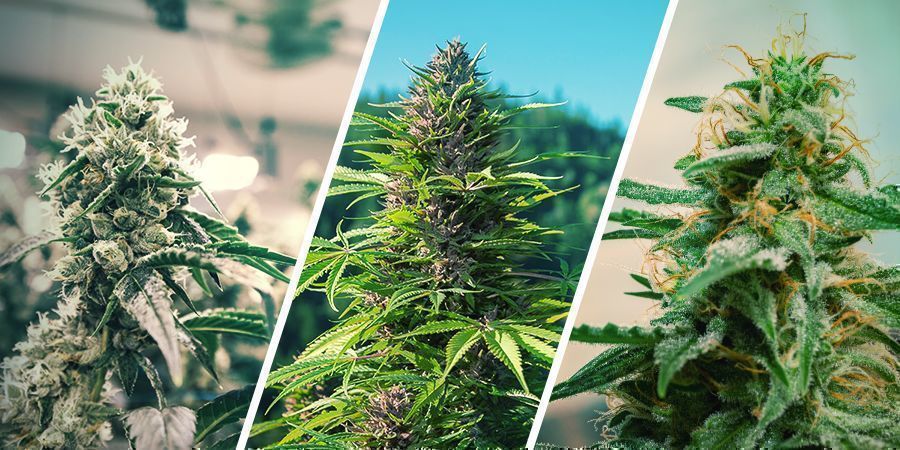
There are some important distinctions to be aware of when it comes to regenerating indoor vs outdoor vs autoflowering specimens. The environment and nature of each cultivar must be taken into account to perform this technique successfully.
INDOOR
Regenerating cannabis plants indoors is fairly straightforward as you can completely control the environment, including the lighting, which is the most important part of the process. This is the environment in which we’d most recommend regenerating your cannabis plant, especially if it’s your first time.
OUTDOOR
Outdoor cannabis plants can also be regenerated if the conditions are right. Usually, you need to be in a region where the growing season is very long. Or, better yet, live in a tropical area where the temperature and daily hours of light do not vary by much throughout the year. Just like regenerating indoors, lighting is key.
If you have the resources, you could also flood your plants with lumens using artificial lighting after the sun goes down even when growing outdoors. A smarter idea is to grow them in pots so you can bring them inside when it's time to revert back to veg. However, most outdoor growers don't have sufficient artificial lighting to do either, so it's a moot point.
AUTOFLOWER
There's a lot of controversy surrounding the regeneration of autoflowering plants. Many say it's impossible or not worth doing. Some people have been able to do this with some success, but it's very different from regenerating a photoperiod plant.
Regenerating an autoflower is more like a cross between regeneration and progressive harvesting. To try this method, wait until you have an autoflower with a main cola that shows signs of peak maturity. Cut the cola, but leave the lower buds on the plant to ripen a little more. The plant will not revert to veg, but you might see new buds form. This could add a small amount to your final yield.
These newly formed buds will lack the vigorous growth and fast maturity rate that the original buds had, so they may lack potency and flavour too. This makes regeneration of autoflowering plants a fun experiment, but not really worthwhile.
HOW TO REGENERATE CANNABIS PLANTS
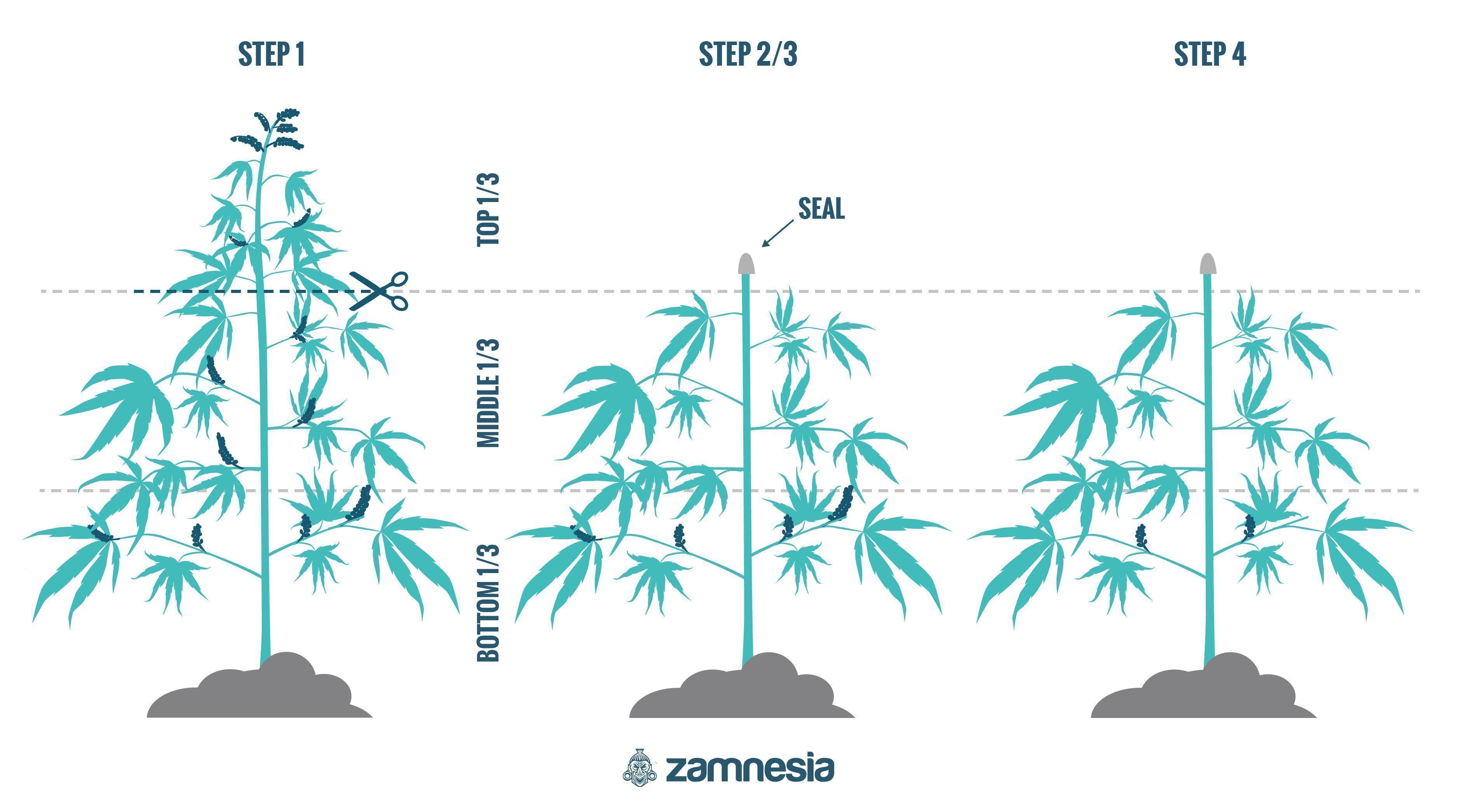
Follow this step-by-step process to regenerate cannabis plants for successive harvests:
-
When you're ready to harvest, remove the top third of the plant entirely. Cut straight and horizontally. Do not cut at an angle.
-
Cover the cut with a piece of tape to seal off the wound so it's protected from germs, dirt, air, and light. This will help prevent unnecessary stress or disease.
-
Remove all of the buds from the middle third of the plant. Leave all healthy fan leaves on the plant.
-
For the bottom third, remove all the large buds near the end of the stems, leaving the smaller buds, healthy leaves, and branches on the plant. Be careful not to prune too much.
-
Indoor growers should switch the lights to an 18/6 or 24/0 schedule.
-
Feed immediately using pH-neutral water that's lukewarm. Add a light-to-moderate dose of nutrients appropriate for the early stage of vegetation. This diet should include increased nitrogen and much less potassium and phosphorus. Note that this recently chopped plant will need less liquid than when it was fully intact and in full bloom.
-
Watch for new leaves to form. Fresh growth can take anywhere from one to three weeks to show.
-
When you're satisfied with the number of new branches and bud sites, switch to a 12/12 lighting schedule to force the next cycle of flowering.
Regeneration is more of an art than an exact science, and, as mentioned above, it's an advanced technique. Don't get frustrated if it doesn't work the first time you try it.
FINAL THOUGHTS
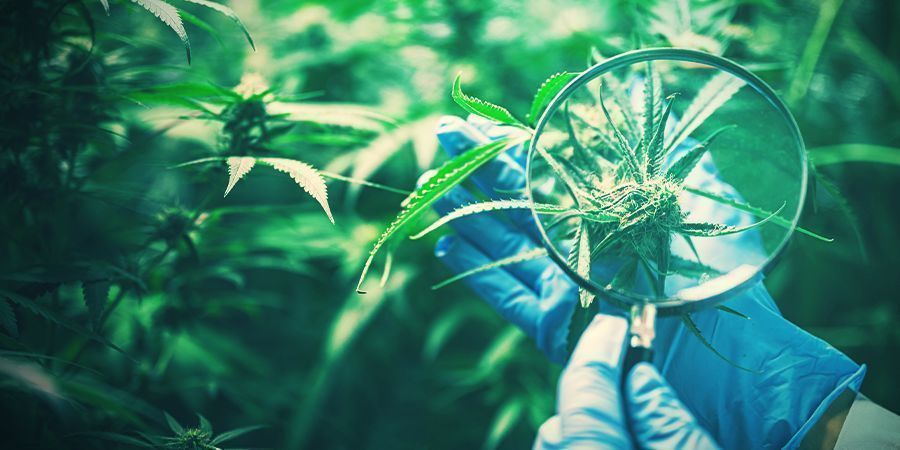
The ability to regenerate cannabis plants is an important but advanced technique that all experienced growers should master at some point, just in case they need it. The biggest advantage is the preservation of desirable genetics that would otherwise be lost. However, there is some potential for time and money savings as well. Otherwise, the amount of effort that goes into the regeneration process may not make this method worth it for all growers, especially those running outdoor operations, those who prefer hydro, autoflower cultivators, and those with no problems nurturing mothers and clones.
Have you ever regenerated a cannabis plant? How did the potency and yield turn out? Let us know!













 United States
United States










